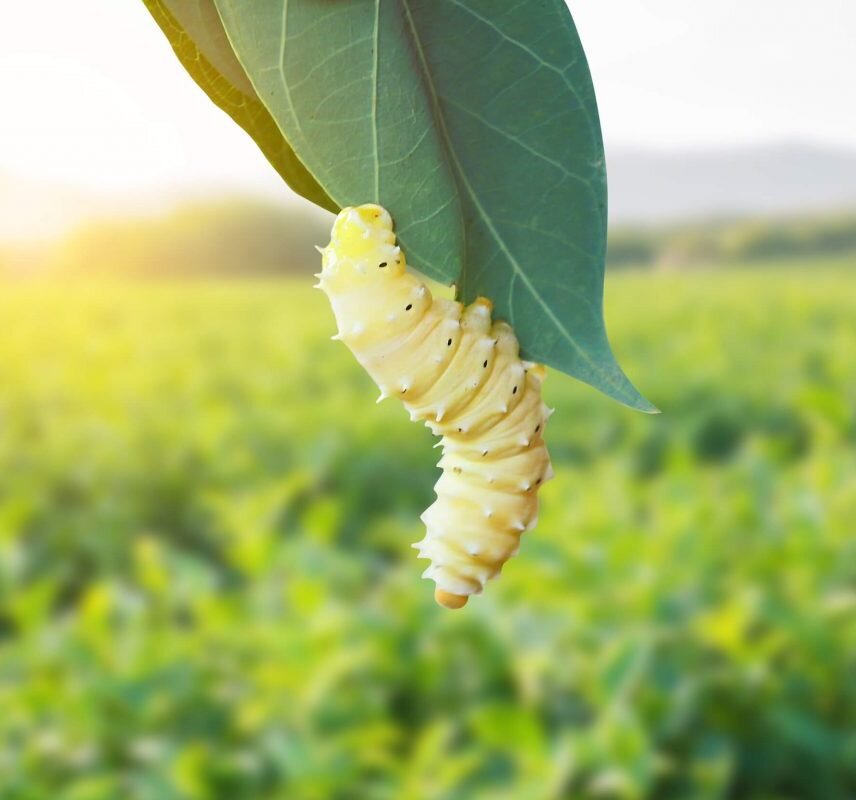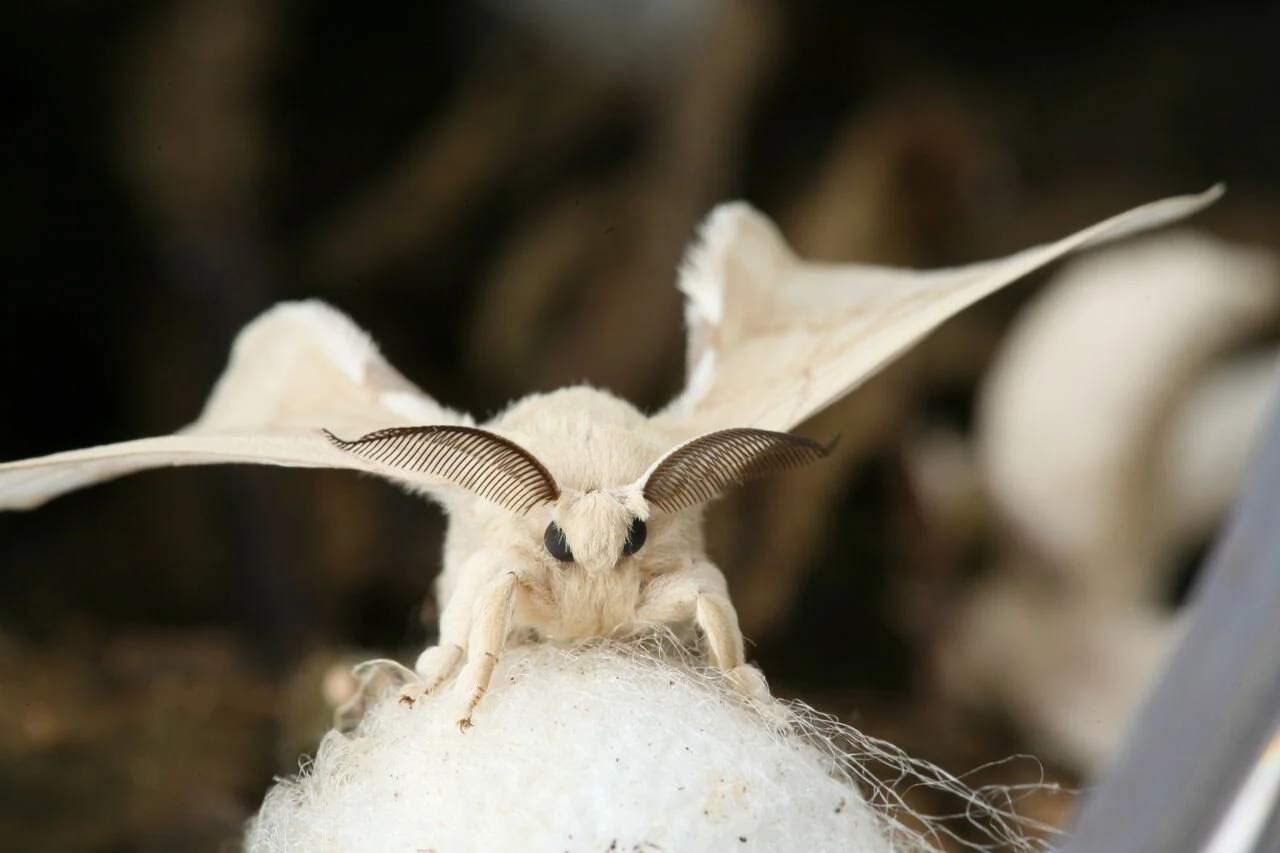Issues in the silk supply chain
Silk comes from the cocoons of boiled-alive caterpillars. It’s made in a system that is often inefficient and rooted in human exploitation.
Before the treatment of silkworms and moths is discussed, their sentience must be addressed.
There is still debate on this topic due to limited research, as used to be the case for fish who are now scientifically recognised as sentient.
With limited research, the wider insect world can be used to consider the sentience of silkworms - actually caterpillars - and moths.
What we do know is that ‘the absence of a neocortex does not appear to preclude an organism from experiencing affective states’, according to The Cambridge Declaration on Consciousness [PDF 27KB].
We have research from as far back as 1979 that indicates worms can feel pain. This study shows that earthworms produce chemicals that act similarly to opiates, which affect sensations of pain and pleasure. Human brains have a similar chemical system.
Other insect studies show that bees, for example, become agitated and even display ‘pessimistic cognitive bias’, where they anticipate bad outcomes after having experienced them before. It’s also been recorded that moths can ‘remember’ being caterpillars.
Recent peer-reviewed research has shown that insects probably do feel pain and have a central nervous system capable of detecting pain. Based on this information, we should treat insects as capable of feeling pain, and protect them from such pain.
In the production of a single kilogram of silk, about 5,500 individual silkworms are killed.
The domesticated silkworm is bred in captivity and feeds on mulberry leaves until large enough to begin the metamorphosis process.
To spin their cocoon, silkworms rotate their body in a figure-eight shape approximately 300,000 times across three to eight days. This process produces about a kilometre of silk filament from the silkworm’s ‘saliva’.
When the silk moth breaks out of their cocoon, they damage the filament. To prevent this from occurring, the cocoon is exposed to steaming hot air or submerged in boiling water, killing the pupae inside. The cocoon’s silk filament is then reeled out by humans for silk production.
In the above image, boiled silk pupae extracted from cocoons are prepared for consumption.
Silkworms and moths, like most farmed species, have been selectively bred to optimise profits
at the expense of their wellbeing.
‘Ahimsa silk’ is claimed to be cruelty-free, as the silk filament in this process is collected from cocoons after moths have hatched.
However, due to selective breeding, these moths will never be able to fly or properly move, so are unable to live very long.
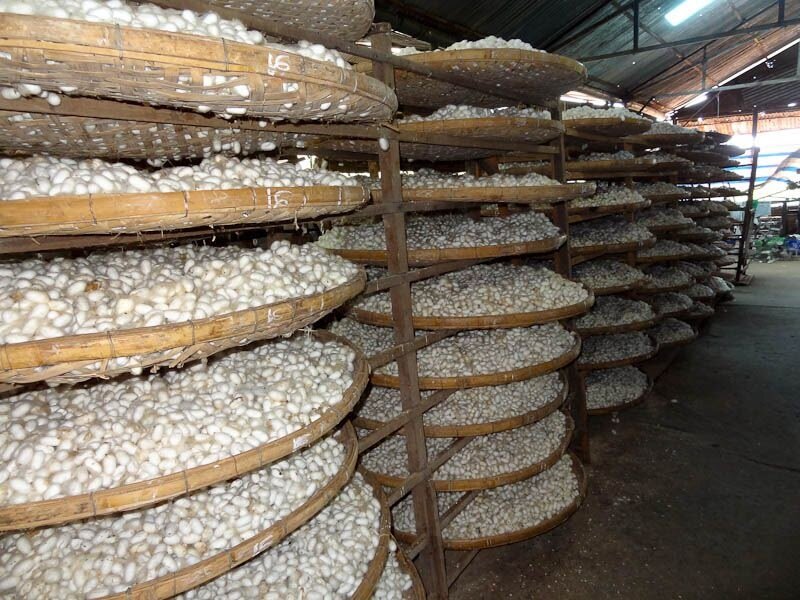
Even in ahimsa silk supply chains, silk moths are often discarded and killed.
‘Ahimsa’ is an ancient Indian doctrine of non-violence. Indian organisation Beauty Without Cruelty investigated ahimsa silk supply chains and found that in these sericulture facilities, silk moths were kept in semi-frozen conditions until breeding seasons, and discarded in bins or crushed after they were of use.
Serious human rights concerns have been documented in the silk industry. With very few brands publishing or having an in-depth awareness of who supplies their raw materials, this is especially concerning.
Child labour
Bonded child labour, when a child’s work is guaranteed to an employer in return for a payment or loan, has been reported in India, the second largest silk-producing country. These children are obliged to continue working for their employer indefinitely. Children can work extremely long days in hazardous conditions that may cause health concerns.
In one Hindu report, Mehboob, a 12-year-old weaver, shares that he has ‘learnt nothing else in [his] life’.
An adult in the same report stated, ‘No well-off parent will send his child to work… all child weavers come from poor families. If they do not work, who will feed them?’
India’s caste system, a hierarchy that places humans into a fixed social order, oppresses ‘low-caste’ people. Hindu children who are ‘low-caste’ are at higher risk of being forced into labour.
Forced labour
Forced labour has been documented in India as well as in Uzbekistan, the third-largest silk producing country. Here, the silk industry is controlled by the government and officials who often threaten silk farmers with loss of land, the withholding of much-needed agricultural supplies, and prosecution if production targets are not met. Strict government production quotas are often reinforced with fines or even physical violence, which may indicate forced labour.
Uzbekistan’s silk industry has been found to rely on child labour. Children as young as five have been reported working from 4am until midnight, picking mulberry leaves and tending to silkworms. As well as causing sleep deprivation, this also interferes with childhood education, with some children taken out of school to work under threat of penalty.
There are multiple health hazards involved in sericulture. A report [PDF 152KB] from Kashmir, India, found that a majority of silkworm rearers suffer with issues like eye irritation, back pain, respiratory problems, allergies, injuries and headaches. Further research found that workers commonly experience burns from hot water and secondary infections like dermatitis.
Rearers are exposed to physical, chemical and biological agents when boiling and steaming cocoons and the silkworms inside them. This work is often done in small, poorly ventilated spaces with firewood for heating.
Further health issues from exposure to chemicals are rife in the farming of the mulberry leaves silkworms eat, which have pesticides and herbicides added to them, often without proper safety protocols in place.
Image: Dermatitis stemming from a burn caused by silk work.
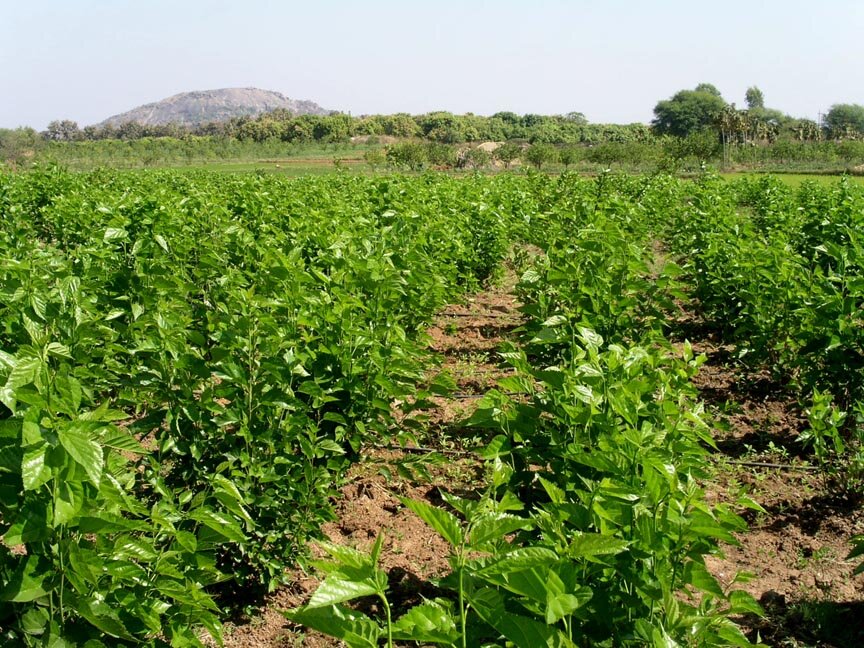
Silk is not a particularly efficient material to produce. At least 187kg of mulberry leaves must be grown to produce 1kg of silk from cocoons.
This inefficiency comes at a cost: global warming impact.
Silk cultivation can be responsible for significant greenhouse gas emissions. Most of these emissions are generally due to farmyard manure and fertiliser use in the cultivation of mulberry leaves grown for silkworm feed. Heavy use of fossil fuels in the reeling and processing of silk is another factor, relevant to the fashion industry more broadly, too.

Luxury doesn’t include exploitation. There is a better way to wear silky materials.
Want to keep learning?
-

An industry built on exploitation
Fashion can signify individual expression and has artistic merit, but, it has, since the industrial revolution, relied on exploitation of enslaved people and then wage workers.
-
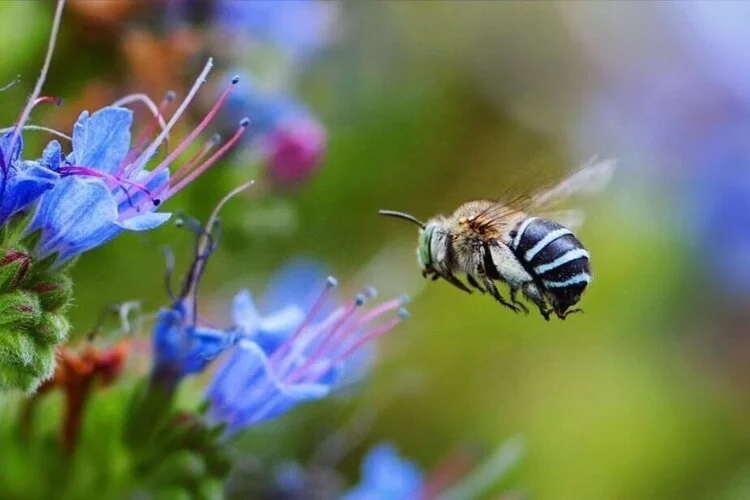
Deforestation and biodiversity destruction for fashion
For too long, a desire for animal-derived clothing has caused mass deforestation and biodiversity destruction.
-

Total ethics fashion: a primer
Our free booklet, ‘total ethics fashion: a primer’ is the perfect introduction to issues in fashion which intersect and harm humans, non-humans and the planet.

